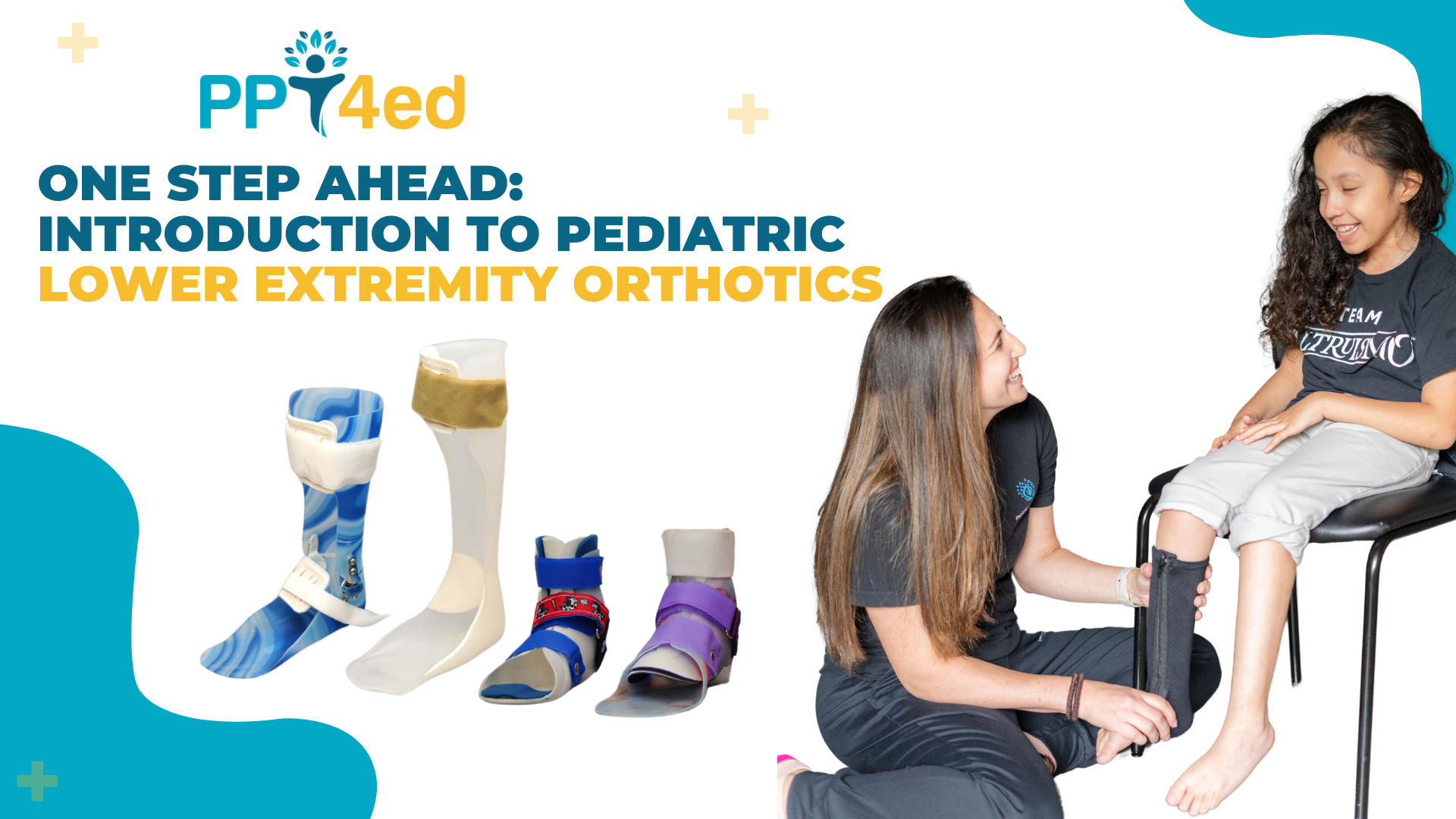One Step Ahead: Introduction to Pediatric Lower Extremity Orthotics
No. Of Credits: 2 CEU
On Demand
Course Duration: 2 hours On Demand Webinar
Price: $30

Course Description
This introductory course seeks to help PTs, OTs, and other healthcare providers who work with children to understand the basic need for orthotic supports, review various options available, and learn how to improve functional outcomes using orthoses. Attendees will examine the underlying biomechanical forces that contribute to musculoskeletal changes in growing children, and learn how to use these same forces to correct/prevent destructive alignment for optimal development and function. Special considerations related to growth, diagnostic symptoms, and goals of the devices will be discussed. Examples of upper extremity, lower extremity and spinal orthoses will be shared, as well as suggestions to optimize utilization of orthoses in a family-friendly, collaborative way.
Program Objectives
- Review basic musculoskeletal alignment during development for ‘typical’ children, ages 0-18 years
- Understand risk factors for commonly seen musculoskeletal deformities for children growing up with motor impairments or delays
- Discuss the role of pathological reflexes, muscle tone, muscle weakness, contractures and/or pain in the development of habitual posture and movement patterns in growing children
- Review basic visual gait/postural analysis, and palpation skills needed to assess for orthotic support
- Overview of common pediatric spinal, upper and lower extremity orthoses; discuss potential limitations and benefits of various designs
- Considerations for frequently seen diagnostic symptoms which may benefit from orthotic supports including spasticity, sensory deficits, torticollis/plagiocephaly, toe-walking, neuromuscular disorders (DMD, SMA), scoliosis
- Understand how to develop a ‘family-centered’ collaborative approach to orthotic recommendations and fitting to improve outcomes for children
Participants will be able to
- Recognize typical musculoskeletal alignment for children, ages 0-18 years
- Recognize common musculoskeletal deformities for children growing up with motor impairments or delays, related to pathological reflexes, muscle tone, muscle weakness, contractures and/or pain
- Use orthotics to help promote improved habitual posture and movement patterns in growing children with motor impairments
- Complete basic visual gait/postural analysis, including palpation skills needed to assess for orthotic support
- Recommend common pediatric spinal, upper and lower extremity orthotics for frequently seen diagnostic symptoms including spasticity, sensory deficits, torticollis/plagiocephaly, toe-walking, neuromuscular disorders (DMD, SMA), scoliosis
- Implement a ‘family-centered’ collaborative approach to orthotic recommendations and fitting to improve developmental outcomes for children
Course Schedule
- Intro to Orthotics
- Anatomy review in pediatric development
- Biomechanical Forces impacting musculoskeletal alignment during development: typical and atypical
- Why is there a need for Orthotics?
- Risk factors for musculoskeletal deformity related to common pediatric diagnoses
- Where to Begin
- Assessment for orthotics: gait analysis, palpation, ROM, orthotic trials
- Review of commonly used orthoses in pediatrics, including benefits and limitations of various designs
- Boots on the Ground - How to use orthotics successfully
- Improving functional outcomes in growing children using orthoses
- Optimizing orthotic acceptance and utilization: collaboration with caregivers, client, therapist, physician, and orthotist throughout the process of recommendation, evaluation, fitting, and education
Instructors
Mary Pengelley, PT, DPT
Mary Pengelley has been a pediatric physical therapist since 1983. She has worked with children of all ages including young adults who have grown up with a variety of developmental disabilities, including cerebral palsy, traumatic brain injury, autism spectrum disorder, genetic disorders, muscular dystrophies, spinal muscular atrophy, brachial plexus injury, and torticollis. Mary is the Director of Education and Research at Progressive Pediatric Therapy in West Palm Beach FL, is certified as an Assistive Technology Practitioner, teaches pediatric classes for DPT students, and continuing education webinars/live classes for licensed therapists.


